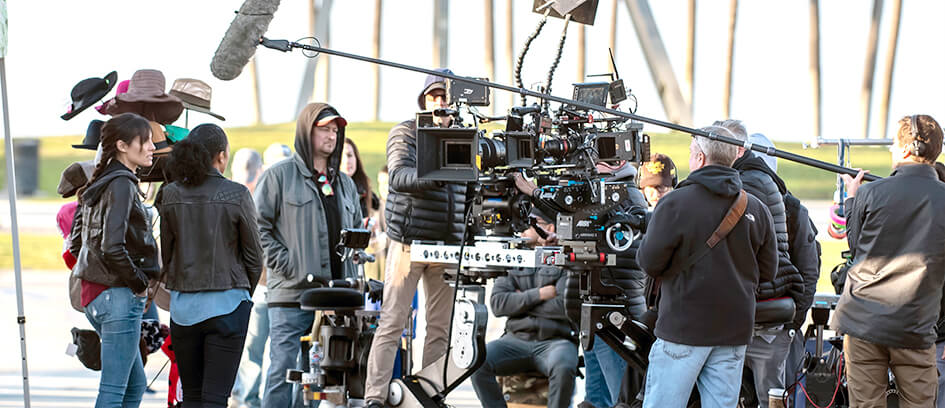Background Actors and Sound in Movies and TV Shows

Controlling sound is important when filming, which is why pantomiming is a big part of working as a Background Actor. If you're new to working with Central Casting, this overview on sound in movies and TV will help you know what to expect the next time you're on set.
Why is it important to control sound while filming?
Imagine a scene in a bar, like at Joe's in Grey's Anatomy or Paddy's in It's Always Sunny in Philadelphia. The main characters are hanging out at their usual table, fellow patrons are locked in conversation, the bartender is busy serving drinks, and the group playing darts is starting to get rowdy. All of these elements are crucial to making the scene feel authentic, but can interfere with the recording of the principal actors' dialogue.
It's estimated that around 98% of sound in movies and TV is added in post-production. That's because the crew's main focus during filming is capturing visuals and dialogue. Background Actors help production achieve this by carrying on silent conversations, quietly moving around set, and being aware of the noise they make.
That said, there are instances when making noise or even speaking (like a group of Background Actors saying exclamatory words) are part of your background responsibilities.
Sound editing and mixing
When filming has finished, the sound editing team records and creates the sounds needed to make the scene work. Going back to the bar scene where the main dialogue was recorded on set, the sound editors and Foley artists watch the footage then create the sounds you would expect to hear, like the chatter of the patrons, the clink of glasses, a stool sliding across the floor, even the thump of a dart hitting the dart board.
If the dialogue captured on set is muddled, not recorded cleanly, or needs to be altered, sound editors will re-record the audio using a process called ADR (automated dialogue replacement). During ADR sessions, the actor will watch the scene on a loop, recording new dialogue to replace the original track.
While the majority of background work happens during the production phase, some movies and TV shows hire walla groups to record authentic background and crowd noise to add to the sound mix. Central Casting hires Background Actors for walla groups, including for animated shows like The Simpsons.
After creating all the sounds required for the scene, it's time to layer them together to build the sound mix. Back to our bar scene, we now have actor dialogue, ambient crowd noise, and movement sounds needed to make the bar feel realistic, but these all need to be blended correctly so none of the sounds distract from the dialogue.
Tips for working as a Background Actor
If you haven't worked as a Background Actor before or don't have a lot of experience pantomiming, there are ways to work on your silent conversation skills. Your fellow Background Actors booked in the scene are a great resource and your time in Holding is a great opportunity to ask for advice about working on set.
Remember to pay attention to all directions given to you by the Assistant Director or Production Assistant. They'll tell you where and when to move and can advise if you have questions about your responsibilities in the scene.
You can learn more about a Background Actor's role in making movies and TV shows in our articles The Different Types of TV Acting Roles and How Production Design Influences Background Work.